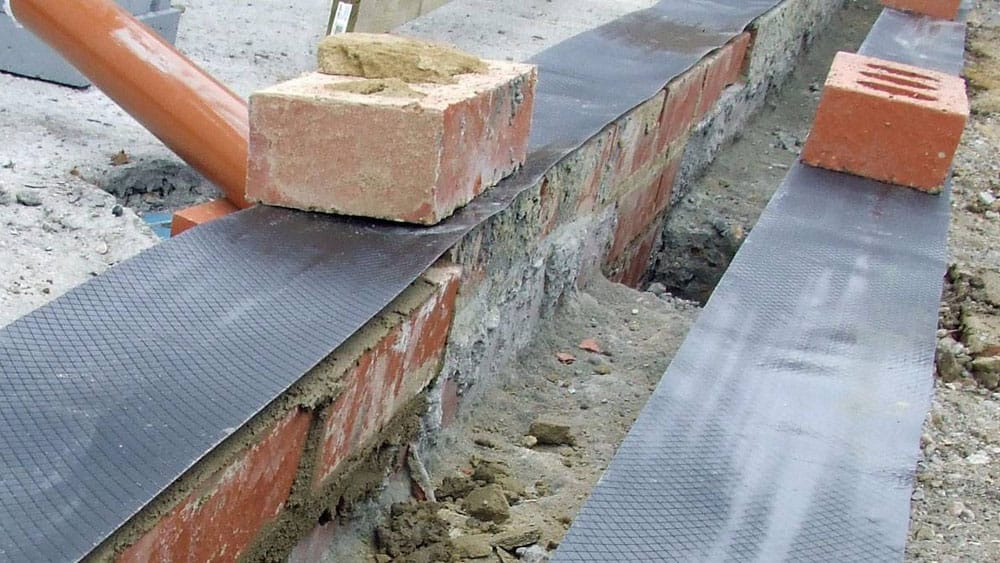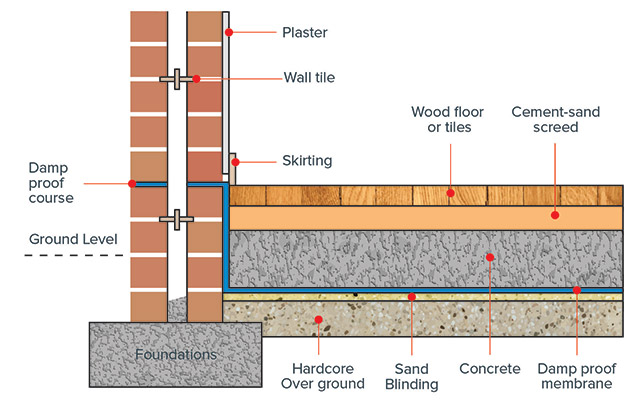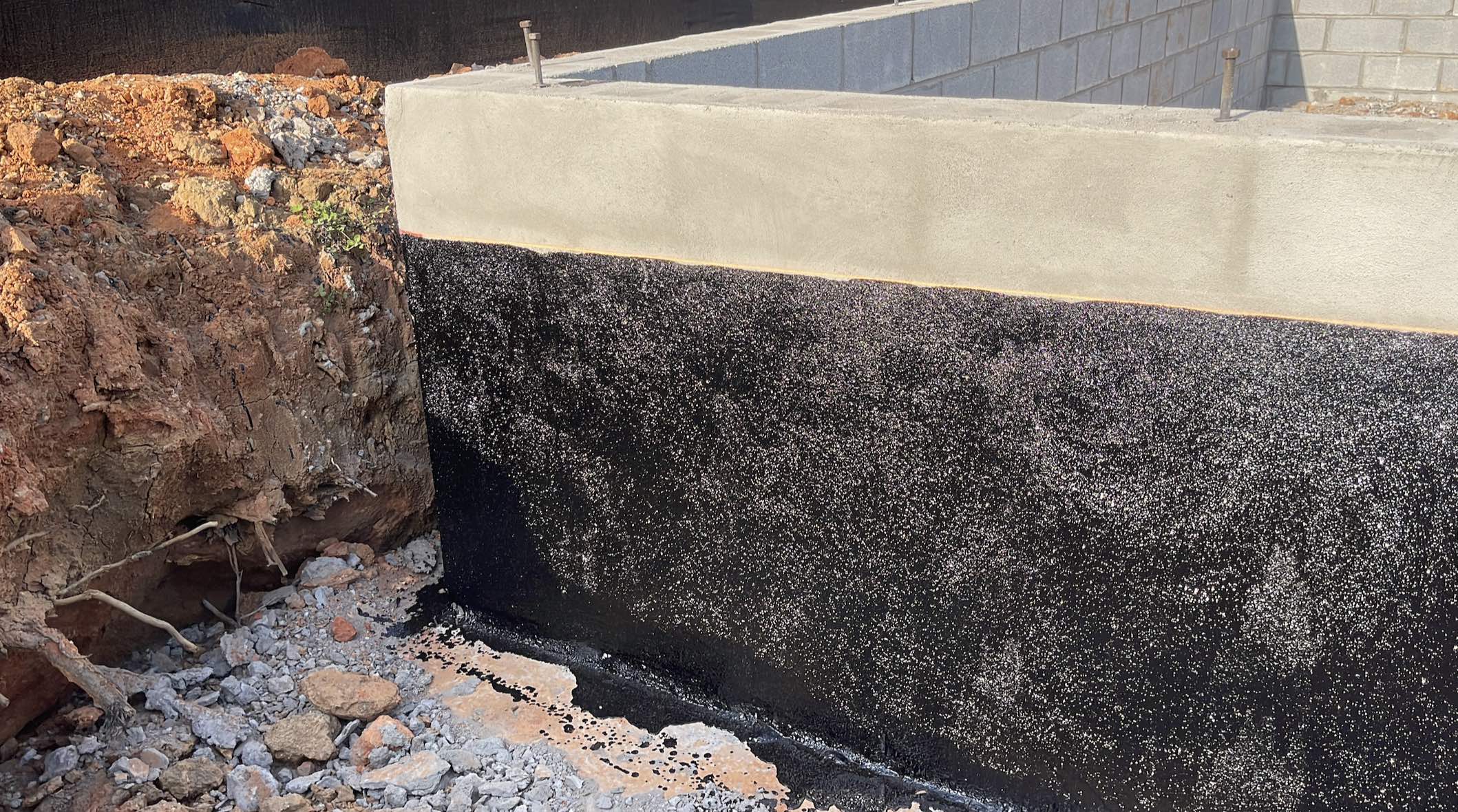Discovering the Various Methods and Solutions for Effective Damp Proofing
Moisture in buildings poses substantial obstacles to both architectural integrity and indoor air quality. Different techniques and solutions have actually arised to fight this prevalent problem. From typical damp-proof membrane layers to innovative chemical treatments, each method offers distinct benefits. Recognizing these options is necessary for reliable moisture control. Nevertheless, choosing the appropriate solution relies on certain building conditions and needs, motivating more expedition into the most efficient damp proofing approaches readily available.
Recognizing the Sources Of Dampness
Wetness can occur from various sources, comprehending these reasons is important for efficient remediation. Frequently, dampness stems from three primary sources: increasing wet, penetrating damp, and condensation. Rising damp occurs when groundwater travels up through permeable materials, such as block or stone, often because of a lack of a reliable barrier (damp removal newcastle). Passing through wet is usually triggered by external aspects, consisting of roof covering leaks, defective seamless gutters, or damaged wall surfaces, enabling water to infiltrate a residential or commercial property. Condensation, on the other hand, arises from excess dampness airborne, often worsened by bad air flow and temperature differences, leading to water droplets forming on surface areas. Recognizing these underlying problems is crucial, as each kind of moisture requires a tailored strategy for remediation. Appropriate analysis helps in establishing the most efficient solutions, eventually securing the architectural stability of a building and boosting indoor air high quality
Standard Damp-Proof Membranes

Chemical Damp-Proofing Solutions
Chemical damp-proofing solutions use an ingenious approach to stop dampness invasion in buildings. These methods usually entail the application of fluid chemicals that pass through stonework and develop an obstacle versus climbing wet. Generally utilized chemicals include silanes, siloxanes, and other water-repellent representatives that respond with surface materials to develop a hydrophobic layer.The application procedure generally needs boring holes into the wall surfaces, infusing the chemical solution, and allowing it to cure. This method is particularly advantageous for older structures where conventional damp-proof membranes might be impractical. Chemical damp-proofing can be less turbulent and much more economical than substantial remodelling projects.While reliable, these solutions depend on correct application and ecological problems for peak efficiency. damp specialist newcastle. Normal maintenance and surveillance are vital to assure the durability of the damp-proofing treatment. Generally, chemical damp-proofing stands for a versatile choice for protecting structures against moisture-related damage
Dental Caries Wall Building Strategies
Cavity wall construction methods supply countless advantages, especially in dampness control and power effectiveness. By incorporating an air gap in between 2 layers of stonework, these walls efficiently mitigate water access while enhancing insulation. This mix not just shields structures from moisture but likewise adds to lowered power intake.
Advantages of Cavity Wall Surfaces
When thinking about effective wet proofing techniques, the benefits of tooth cavity wall surfaces stick out prominently. Cavity walls include two different layers, creating an air space that efficiently lowers dampness infiltration. This style decreases the threat of moisture, as the external wall surface acts as an obstacle against rain and water access. Additionally, tooth cavity wall surfaces enhance thermal insulation, which contributes to power effectiveness by lowering warmth loss. They additionally offer audio insulation, aiding to produce a quieter indoor atmosphere. The air gap enables for air flow, which aids in moisture control and minimizes the probability of mold development. These benefits not just improve the general comfort of a building however likewise add to its longevity and structural stability.
Wetness Control Techniques
Reliable dampness control methods are essential in cavity wall building to guarantee long-lasting defense versus wetness. One primary technique entails the unification of weep openings, which facilitate water drainage from the cavity, avoiding build-up. In addition, making use of breathable membranes can assist manage moisture degrees while allowing trapped vapor to escape. Proper placement of insulation is also crucial, as it must not obstruct drainage courses. Additionally, making sure that the outer fallen leaves of the dental caries wall surface are built with waterproof materials improves total sturdiness. Routine upkeep checks are necessary to determine any obstructions or damage early, protecting the structure's honesty. Inevitably, a combination of these strategies creates a durable defense versus wetness invasion in dental caries wall surfaces.
Insulation and Power Efficiency
Insulation plays a crucial duty in boosting energy efficiency within dental caries wall building and construction. By integrating insulating products, these walls produce a thermal barrier that lessens warm loss and minimizes energy usage. Effective insulation not just aids maintain a secure indoor temperature however additionally mitigates the threat of moisture, as it prevents condensation within the wall surface tooth cavity. Various strategies, such as making use of rigid foam boards or mineral wool, can be used to achieve excellent insulation performance. Additionally, proper setup is necessary to ensure that gaps and voids are lessened, which can otherwise compromise energy performance. Eventually, a well-insulated dental caries wall adds considerably to total sustainability and decreases cooling and heating prices for house owners.
Exterior Damp Proofing Techniques
Outside wet proofing techniques are necessary for protecting structures from moisture infiltration. Two reliable techniques include the application of water-proof membranes and the setup of French drains. These solutions help alleviate water build-up and protect the stability of structures.
Waterproof Membrane Application
While numerous methods exist for stopping moisture access, the application of water-proof membrane layers stays an extremely effective external wet proofing method. These membrane layers are normally made from materials such as polyethylene, rubber, or customized asphalt, providing a robust obstacle against water penetration. The setup process includes using the membrane layer to the outside surface areas of structures or wall surfaces, making sure total coverage to stop leaks. Appropriate attachment and securing at joints are crucial to maximizing performance. Water-proof membranes can be used in numerous types, including fluid finishings and sheet membrane layers, enabling versatility based on the certain needs of the framework. This approach not just secures buildings from moisture but additionally boosts their long life and structural honesty.
French Drainpipe Installation
One effective method for taking care of groundwater and avoiding wetness build-up around a structure's foundation is the installation of a French drainpipe. This drain system includes a trench full of gravel and a perforated pipe that reroutes surface water far from the structure. Proper installation calls for cautious preparation, making certain that the drain slopes far from the structure to facilitate optimal water circulation. Additionally, the area of the drain is important; it should be placed in areas susceptible to pooling or excess wetness. Routine upkeep, consisting of cleaning debris from the crushed rock and guaranteeing the pipeline continues to be unblocked, is important for lasting effectiveness. Ultimately, a well-installed French drainpipe can greatly lower the risk of water-related concerns in structures and cellars.
Inside Waterproofing Methods
Inside waterproofing methods are crucial for protecting a building's inside from wetness infiltration and potential water damage. These strategies normally entail the application of specialized products and techniques created to produce a moisture obstacle within the structure. One typical technique is making use of water resistant here coatings or sealers on walls and floorings, which stop moisture from passing through surfaces.Additionally, mounting indoor drain systems, such as sump pumps, can properly handle water build-up in cellars and creep rooms. An additional technique includes making use of vapor barriers, which are set up to hinder wetness activity from the ground into living spaces.Moreover, attending to any type of cracks or spaces in wall surfaces or foundations with proper sealers assures a thorough defense versus water intrusion. By executing these indoor waterproofing methods, residential property owners can significantly minimize the danger of mold growth, architectural damages, and other moisture-related problems. Correct implementation of these methods is crucial for lasting protection and building stability.
Regular Upkeep and Evaluation Practices
Routine upkeep and examination techniques are crucial for assuring the long-lasting efficiency of damp proofing options in any type of structure. Regular checks enable homeowner to recognize very early indications of dampness intrusion, such as peeling paint, mold and mildew development, and stuffy smells. These indicators can signal underlying concerns that need prompt attention.Inspections must be conducted a minimum of every year, focusing on prone locations like cellars, crawl spaces, and outside wall surfaces. Throughout these evaluations, residential property proprietors ought to check out sealers, drainage systems, and ventilation to confirm they operate correctly.Additionally, keeping rain gutters and downspouts is essential, as clogged up systems can cause water build-up near the foundation. Applying a routine maintenance routine, in addition to timely fixings, can substantially extend the life-span of wet proofing actions and shield the architectural honesty of the structure. Positive actions ultimately add to the total health and wellness of the living environment.
Frequently Asked Questions
For How Long Does Damp Proofing Typically Last?
The period of damp proofing performance varies, typically lasting between 20 to half a century. Variables such as application high quality, ecological problems, and upkeep practices significantly affect the longevity of the moist proofing therapy.

Can I Damp Evidence My Home Myself?
The private pondered the feasibility of do it yourself damp proofing. With correct research study and the right materials, it is possible. They additionally identified the importance of specialist guidance to assure resilient efficiency and stop future issues.
What Are the Indications of Ineffective Damp Proofing?
Indications of inadequate damp proofing consist of relentless musty smells, visible mold growth, peeling paint, damp spots on wall surfaces, and wood degeneration - damp proofing newcastle. Property owners must attend to these issues quickly to avoid additional damages and health problems
Does Damp Proofing Affect Indoor Air Top Quality?

How Much Does Specialist Damp Proofing Cost?
Professional moist proofing prices vary considerably, usually ranging from $1,000 to $5,000 depending on the home's dimension, the extent of the moist issue, and selected approaches. Each situation needs a customized evaluation for precise pricing. Frequently, moisture stems from three primary resources: increasing damp, permeating wet, and condensation. When considering effective wet proofing methods, the advantages of tooth cavity walls stand out plainly. Exterior wet proofing approaches are crucial for protecting structures from moisture seepage. While various techniques exist for avoiding dampness ingress, the application of waterproof membranes continues to be an extremely reliable exterior wet proofing strategy. Signs of inefficient wet proofing include relentless mildewy odors, noticeable mold and mildew development, peeling off paint, wet patches on wall surfaces, and wood decay.